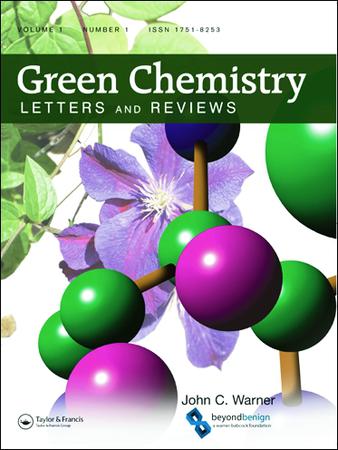Source of Cr(VI) in the aquatic ecosystem, its genotoxic effects and microbial removal from contaminated water
IF 5.8
3区 化学
Q1 CHEMISTRY, MULTIDISCIPLINARY
引用次数: 0
Abstract
Cr(VI) compounds have important industrial applications and are used in various sectors like tanning, chrome plating, anti-corrosion agents and wood preservation. The Cr(VI) contamination in the wastewater is generally due to several natural and anthropogenic sources. Anthropogenic activities like several industrial operations play a major role in the Cr(VI) contamination in the aquatic ecosystem. Cr(VI) well-known toxic metal ion and its exposure in humans causes several health issues. Cr(VI) enters the cells and gradually reduces into a lower oxidation state and generates oxidative stress in the cell which damages cell organelles. The Cr(VI) mediated genotoxicity has been described as damaging the DNA base pairing, sugar-phosphate backbone, histone modification and chromosomal damage. Water and wastewater must be treated to remove Cr(VI) due to its high toxicity. There are several, physiochemical methods used for Cr(VI) remediation but these approaches are expensive and produce hazardous sludge during the treatment process. Therefore, a suitable environmentally friendly and effective Cr(VI) removal approach is urgently needed. Microbial removal of Cr(VI) is considered an eco-friendly and cost-effective process. In this, the authors focused on sources, genotoxicity and microbial remediation approaches of Cr(VI).水生生态系统中Cr(VI)的来源、遗传毒性效应及污染水体的微生物去除
铬(VI)化合物具有重要的工业应用,用于制革、镀铬、防腐蚀剂和木材防腐等各个领域。废水中的Cr(VI)污染通常是由几种自然和人为来源引起的。水生态系统中Cr(VI)污染的主要原因是人为活动,如工业生产等。众所周知的有毒金属离子铬(ⅵ)及其暴露在人体中会引起若干健康问题。Cr(VI)进入细胞后逐渐还原为较低的氧化态,在细胞内产生氧化应激,损害细胞器。Cr(VI)介导的遗传毒性被描述为破坏DNA碱基配对、糖-磷酸主干、组蛋白修饰和染色体损伤。由于Cr(VI)的高毒性,必须对水和废水进行处理以去除它。有几种物理化学方法用于Cr(VI)的修复,但这些方法都是昂贵的,并且在处理过程中产生有害的污泥。因此,迫切需要一种适合环境友好、有效的Cr(VI)去除方法。微生物去除Cr(VI)被认为是一种生态友好且经济有效的工艺。本文主要介绍了铬(VI)的来源、遗传毒性和微生物修复方法。
本文章由计算机程序翻译,如有差异,请以英文原文为准。
求助全文
约1分钟内获得全文
求助全文
来源期刊

Green Chemistry Letters and Reviews
CHEMISTRY, MULTIDISCIPLINARY-GREEN & SUSTAINABLE SCIENCE & TECHNOLOGY
CiteScore
9.10
自引率
3.00%
发文量
48
期刊介绍:
Green Chemistry Letters and Reviews is an Open Access, peer-reviewed journal focused on rapid publication of innovative new syntheses and procedures that reduce or eliminate the use and generation of hazardous materials. Reviews of state-of-the-art green chemistry technologies are also included within the journal''s scope.
Green Chemistry Letters and Reviews is divided into three overlapping topic areas: research, education, and industrial implementation. The journal publishes both letters, which concisely communicate the most time-sensitive results, and reviews, which aid researchers in understanding the state of science on important green chemistry topics. Submissions are encouraged which apply the 12 principles of green chemistry to:
-Green Chemistry Education-
Synthetic Reaction Pathways-
Research and Process Analytical Techniques-
Separation and Purification Technologies-
Renewable Feedstocks-
Degradable Products
 求助内容:
求助内容: 应助结果提醒方式:
应助结果提醒方式:


